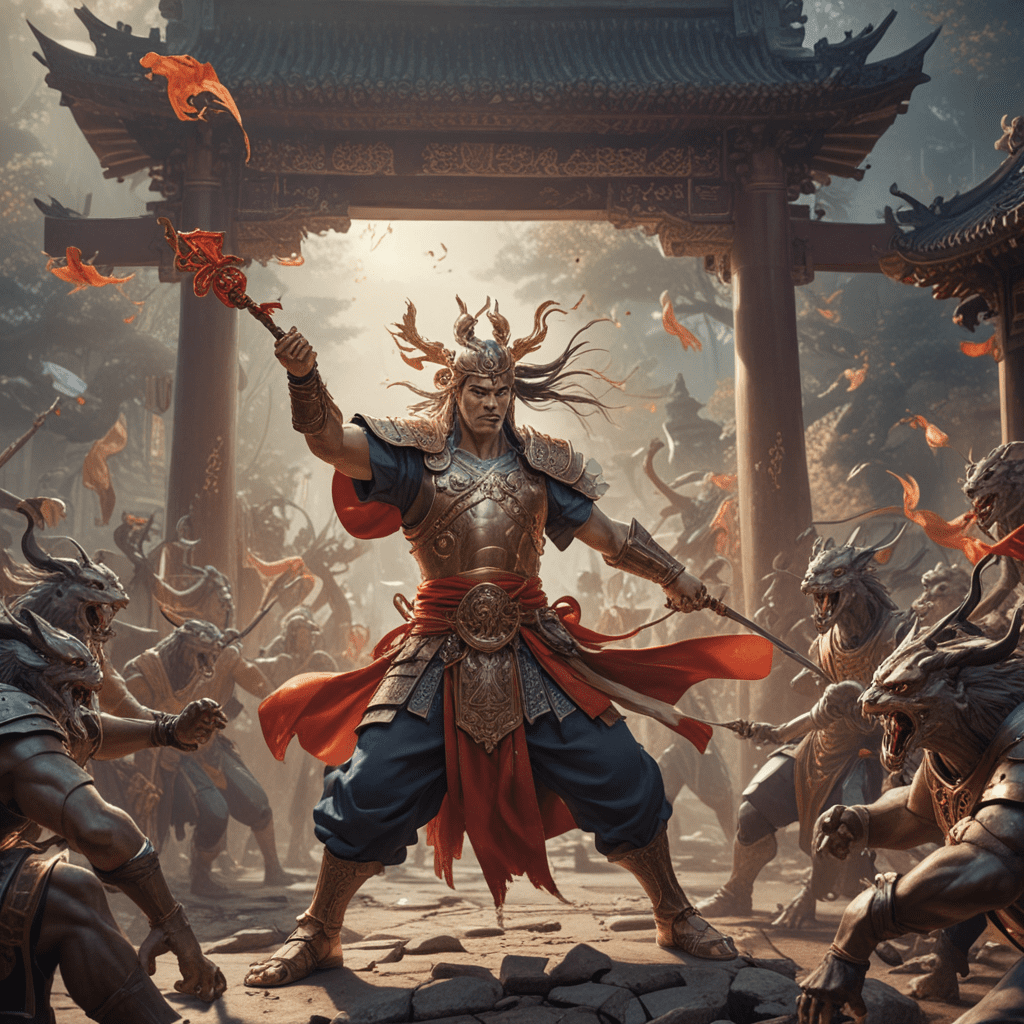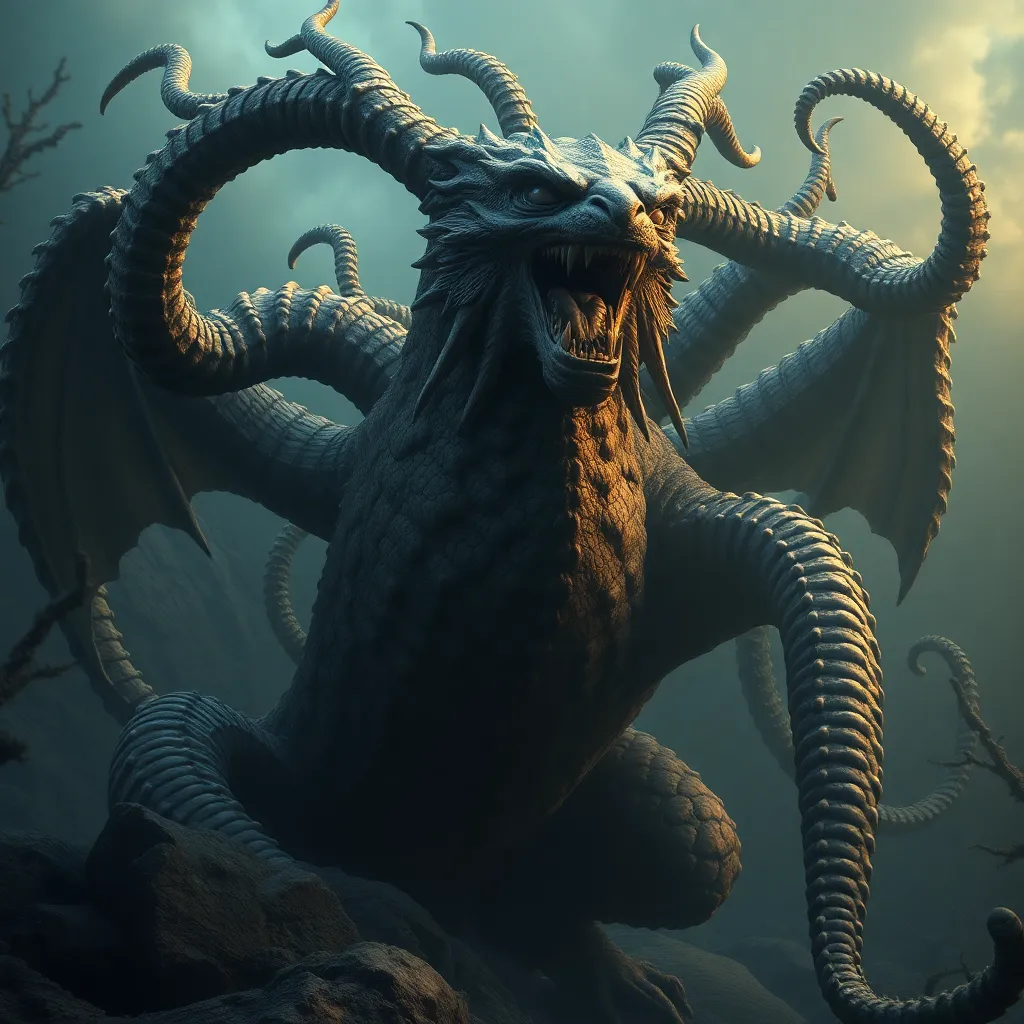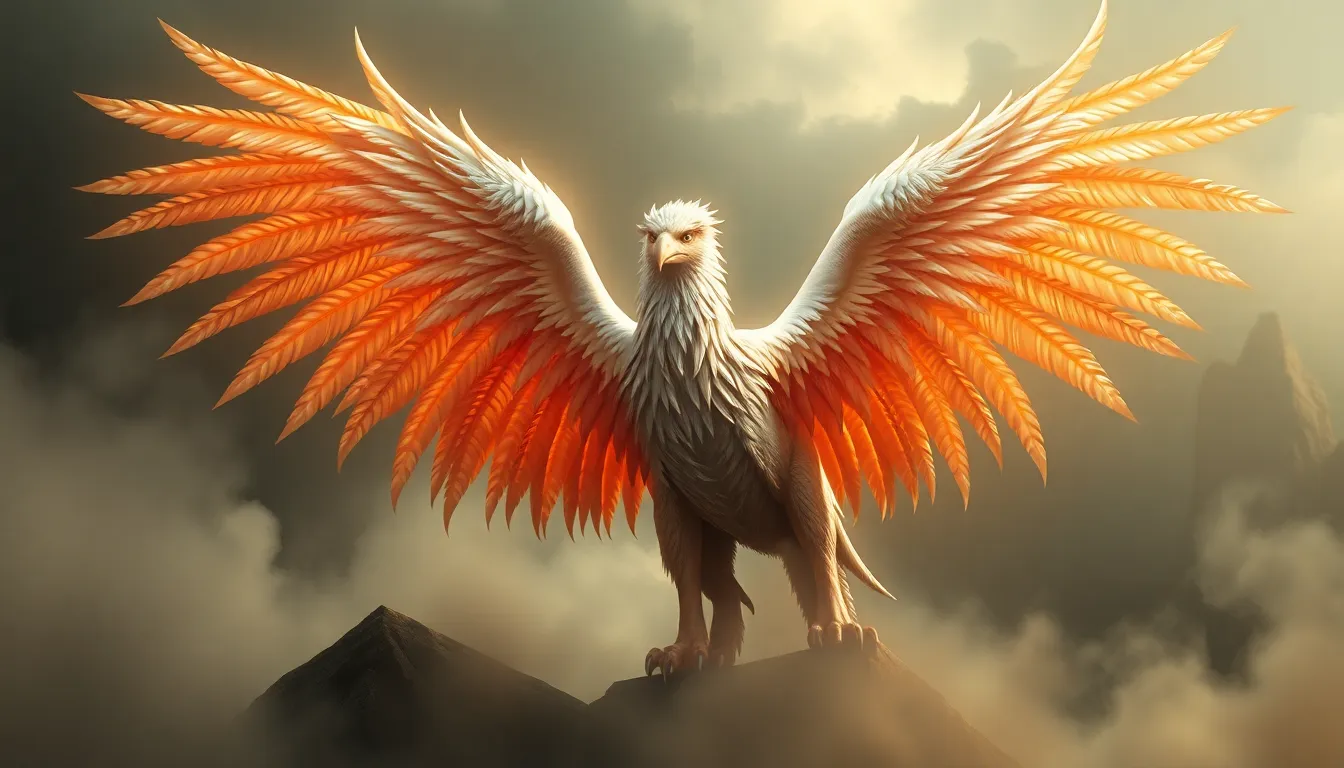Chinese Mythological Tales of War and Heroism
I. The Yellow Emperor's Battle with Chi You
The Yellow Emperor, a legendary figure in Chinese mythology, is renowned for his victory over Chi You in a titanic battle that shaped the destiny of the Chinese nation. Chi You, a fearsome warrior with an unyielding spirit, commanded an army of demonic creatures and sought to conquer the world.
The Yellow Emperor, known for his wisdom and strategic brilliance, assembled a formidable force of loyal warriors and divine beings. Through a combination of cunning tactics, divine intervention, and the indomitable spirit of his troops, the Yellow Emperor triumphed over Chi You, cementing his place in Chinese history as a revered emperor and a symbol of unity and strength.
II. The Tale of King Yu and the Great Flood
King Yu, a legendary figure in Chinese mythology, is celebrated as the hero who tamed the Great Flood and brought order to the chaos that threatened to engulf the land. According to legend, torrential rains relentlessly poured upon the earth, submerging mountains and drowning countless lives.
In the face of this cataclysmic event, the emperor Yao sought a worthy successor to lead the people to safety. King Yu, known for his determination and selflessness, volunteered for the perilous task. Armed with divine tools gifted by the gods, Yu tirelessly worked for thirteen years, dredging rivers, building dams, and draining away the floodwaters.
III. The Legend of Nu Wa and the Repair of Heaven
In Chinese mythology, Nu Wa is revered as the creator goddess and a symbol of resilience and nurturing. Legend has it that in ancient times, the celestial pillar that supported the heavens collapsed, causing the sky to shatter and the earth to quake.
Faced with this cosmic crisis, Nu Wa rose to the challenge. Gathering multicolored stones, she smelted and transformed them into a celestial patch, mending the broken sky and restoring order to the universe. Her act of creation and repair is celebrated as a testament to her immense power and her unwavering commitment to protecting the world.
IV. The Eight Immortals and the Battle of the Lotus Lake
The Eight Immortals, a group of revered figures in Chinese Taoist mythology, are renowned for their extraordinary powers and their unwavering quest for enlightenment. Legend has it that once, as they were traversing the vast expanse of the Eastern Sea, they encountered a demonic army led by a powerful sorcerer.
Unmoved by the sorcerer's dark magic, the Eight Immortals engaged in a fierce battle, employing their divine abilities and the power of nature itself. Through their combined efforts, they vanquished the demonic forces, restoring balance and harmony to the realm.
V. The Story of General Guan Yu and the Battle of Guandu
General Guan Yu, a legendary figure in Chinese history and mythology, is celebrated for his unwavering loyalty, martial prowess, and unyielding spirit. His most renowned exploit was his participation in the Battle of Guandu, a pivotal conflict that shaped the destiny of the Three Kingdoms era.
As a general under the command of warlord Liu Bei, Guan Yu played a crucial role in the battle. His unmatched swordsmanship and strategic brilliance led to several victories, including the famous capture of Yan Liang, a formidable general in the opposing army. Guan Yu's bravery and dedication became a symbol of hope and inspiration for his comrades and a source of fear and awe for his enemies.
VI. The Monkey King's Revolt in Heaven
The Monkey King, also known as Sun Wukong, is one of the most beloved characters in Chinese mythology. Born from a magical stone, he possessed extraordinary powers and an indomitable spirit. However, his rebellious nature led him to challenge the authority of the Jade Emperor, the ruler of heaven.
In a daring act of defiance, the Monkey King, along with his loyal companions, waged a fierce battle against the celestial army. Employing his miraculous abilities, he fought valiantly, causing chaos and disruption throughout the heavenly realm. Despite his initial victories, the Monkey King was ultimately defeated and imprisoned beneath a mountain for five hundred years.
VII. The Journey to the West and the Battle of Flaming Mountains
The Journey to the West is one of the most famous and beloved tales in Chinese literature. It recounts the adventures of the monk Xuanzang and his three companions, including the Monkey King, as they travel to India in search of sacred Buddhist scriptures.
Along their perilous journey, they faced numerous challenges, including the treacherous Flaming Mountains. These mountains were engulfed in an inferno that could vaporize any ordinary traveler. However, the Monkey King, with his magical powers, was able to create a path through the flames, shielding his companions from harm. This heroic act demonstrated the Monkey King's unwavering commitment to his companions and his ability to overcome even the most formidable of obstacles.
VIII. The Three Kingdoms and the Battle of Red Cliffs
The Three Kingdoms era was a tumultuous period in Chinese history, marked by the rise and fall of warlords and the eventual unification of the country under the Jin Dynasty. One of the most famous battles of this era was the Battle of Red Cliffs, a decisive conflict that solidified the power of the蜀汉(Shu Han) and東吳(Eastern Wu) alliances.
In this epic battle, the allied forces, led by Zhuge Liang and Zhou Yu, faced overwhelming odds against the强大的曹操(Cao Cao) army. However, through brilliant strategy, cunning tactics, and the valiant efforts of their troops, they emerged victorious. The Battle of Red Cliffs is remembered as a turning point in the Three Kingdoms era and a testament to the power of unity and perseverance.
IX. The Legend of Mulan and the Hun Invasion
Mulan is one of the most celebrated heroines in Chinese history and folklore. According to legend, she lived during the Northern Wei Dynasty and disguised herself as a man to take her elderly father's place in the army when the Huns invaded China.
Mulan's exceptional martial skills and strategic thinking proved invaluable in battle. She fought bravely, leading her comrades to several victories against the overwhelming Hun forces. Her courage and determination became an inspiration to her fellow soldiers and a symbol of national pride for generations to come.
X. The Romance of the Three Kingdoms and the Battle of Wuzhang Plains
The Romance of the Three Kingdoms is a historical novel that recounts the events of the Three Kingdoms era. It is one of the most popular and influential works of Chinese literature, beloved for its vivid characters, intricate plots, and epic battles.
The Battle of Wuzhang Plains was one of the final and most decisive battles of the Three Kingdoms era, fought between the蜀漢(Shu Han) and魏(Wei) kingdoms. The battle raged for months, with both sides suffering heavy losses. In the end, the Shu Han forces were defeated, marking the end of an era and the eventual reunification of China.
Frequently Asked Questions (FAQs)
Q: What are some common themes in Chinese mythological tales of war and heroism?
A: Courage, loyalty, sacrifice, perseverance, and the triumph of good over evil are common themes in Chinese mythological tales of war and heroism.
Q: Who are some of the most famous heroes in Chinese mythology?
A: The Yellow Emperor, King Yu, Nu Wa, the Eight Immortals, General Guan Yu, the Monkey King, Zhuge Liang, Zhou Yu, Mulan, and Zhao Yun are some of the most famous heroes in Chinese mythology.
Q: What are the most famous battles in Chinese mythology?
A: The Battle of Zhuolu, the Battle of the Great Flood, the Battle of the Lotus Lake, the Battle of Guandu, the Battle of Flaming Mountains, the Battle of Red Cliffs, the Battle of Wuzhang Plains, and the Battle of Changban are some of the most famous battles in Chinese mythology.




